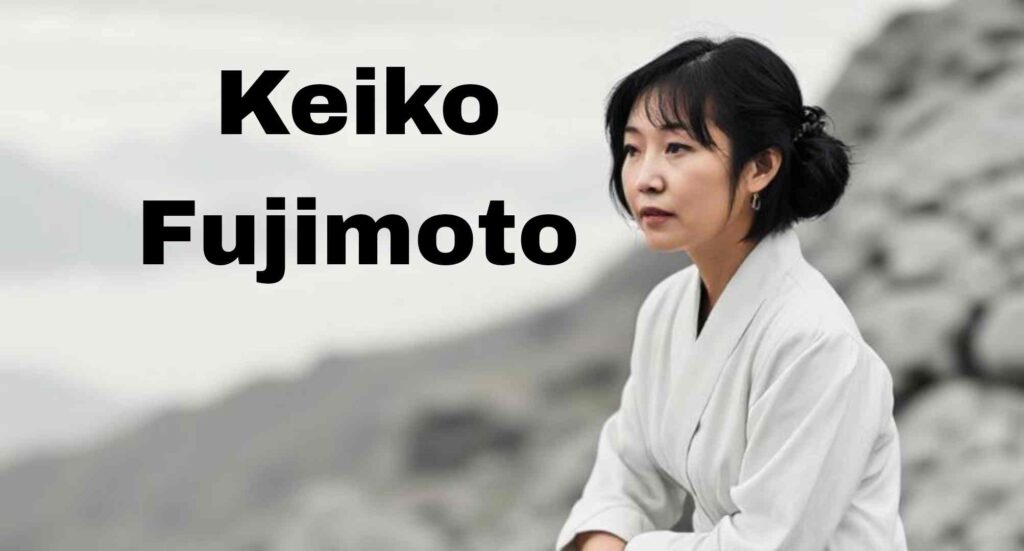Keiko Fujimoto is a Japanese-American television personality and artist who gained public attention not just for her creative contributions but also for her personal life, particularly her former marriage to disgraced tech entrepreneur Ramesh “Sunny” Balwani. While she has maintained a relatively private lifestyle, Fujimoto’s name often appears in discussions surrounding high-profile business and media scandals due to her connection to the Theranos case. However, beyond these associations, the story of Keiko Fujimoto is a testament to the complexity of human lives and relationships, highlighting why biographies are more than just chronicles of fame. They are explorations of identity, resilience, and personal transformation. Understanding Keiko Fujimoto’s life through a biographical lens helps underscore the value of documenting real-life stories—stories that hold power, reflect cultural shifts, and serve as valuable tools for both learning and reflection.
What Are Biographies?
A biography is a detailed description of a person’s life, encompassing more than just dates and events. It delves into their experiences, achievements, failures, influences, and personal growth. When exploring someone like Keiko Fujimoto, a biography serves not just as a factual record but as a narrative journey that adds depth to her public persona. Biographies aim to present a balanced view, combining personal background with public endeavors. This genre of literature allows readers to step into someone else’s shoes, fostering empathy and understanding. It is especially meaningful for public figures like Fujimoto, whose stories are often reduced to soundbites or scandal-related summaries. A full biography helps restore the individual behind the headlines. By examining someone’s complete journey, biographies uncover the motivations and decisions that shaped their path, making them essential tools for deeper knowledge and cultural literacy.
Preserving History Through Biographies
Biographies play a crucial role in preserving historical narratives. Every individual story, including that of Keiko Fujimoto, contributes to the larger fabric of our collective history. These stories offer unique insights into different eras, societal norms, and political climates. Fujimoto’s life, shaped in part by her Japanese heritage and American experiences, reflects broader themes of immigration, cultural integration, and media representation. Biographical works ensure that these perspectives are not lost over time. They serve as firsthand accounts that can offer context to historical events, giving voice to people who might otherwise be forgotten. When crafted well, a biography preserves more than just data—it encapsulates the emotions, struggles, and victories of a life well-lived. In Fujimoto’s case, her story intersects with one of Silicon Valley’s biggest scandals, adding her perspective to the broader historical understanding of that event.
Biographies as a Source of Inspiration
One of the most powerful purposes of biographies is their ability to inspire. Whether someone has achieved great success or endured major challenges, their story can serve as motivation for others. Keiko Fujimoto’s career in television and art, combined with her resilience amid personal turmoil, makes her a compelling subject. Biographies humanize people, showing readers that struggles, detours, and failures are part of every life. Through Fujimoto’s journey, we see a woman navigating the intersections of culture, career, and personal identity in a complex world. Her biography can inspire others—particularly women and minorities—to pursue their goals despite obstacles. Biographies remind us that greatness isn’t always defined by public accolades. Often, it’s about perseverance, growth, and the quiet strength behind difficult decisions. By reading about the paths others have taken, we gain the courage to shape our own.
Educating Future Generations
Biographies serve as important educational tools, especially for younger generations. By learning about figures like Keiko Fujimoto, students can gain a nuanced understanding of modern history, media influence, and ethical challenges in the tech industry. Education through biographies goes beyond textbooks; it introduces real-life case studies that are engaging and relatable. Fujimoto’s life can be used to discuss issues like privacy, media scrutiny, gender roles, and cross-cultural identity. These topics are essential in fostering a well-rounded education. Through her biography, educators can encourage critical thinking and empathy in students. Rather than presenting a black-and-white narrative, biographies offer complexity, helping young people understand that life decisions are often made in shades of gray. As readers explore these stories, they not only learn about the past but also reflect on their own values and aspirations.
Understanding Cultural and Social Contexts
Biographies help readers understand different cultural and social environments. Keiko Fujimoto’s life, which spans continents and cultures, presents a unique opportunity to explore the intersections of East and West. Her experiences reflect not just personal choices but also societal expectations placed on women in both Japan and America. These narratives are invaluable in promoting cross-cultural understanding. By examining the societal pressures and cultural dynamics that shaped Fujimoto’s life, readers can better grasp how individual decisions are influenced by larger systems. Biographies act as mirrors of the societies in which they’re set, offering insights into changing norms and values. For instance, Fujimoto’s shift from public figure to private individual can be seen as a commentary on celebrity culture and personal agency. Understanding such dynamics makes readers more globally aware and socially conscious.
Learning from Mistakes and Triumphs
Biographies provide a lens through which we can learn from the mistakes and triumphs of others. Keiko Fujimoto’s story includes personal and professional highs and lows, which makes her biography particularly compelling. While much of the media coverage has focused on her ex-husband’s legal troubles, a full biography would explore how Fujimoto navigated those challenges and what lessons she learned. These stories are not meant to idolize or demonize but to reflect the complexity of human experience. They teach us that setbacks do not define us—how we respond to them does. Through biographies, readers learn that every decision has consequences and that resilience is often the key to recovery. Fujimoto’s journey can serve as a case study in maintaining dignity and privacy during a public crisis. This type of learning—rooted in real-life experience—is far more impactful than hypothetical lessons.
Creating a Personal Connection
Biographies create a personal connection between the subject and the reader. Keiko Fujimoto may be a name known to some because of her high-profile associations, but a biography can turn her into a fully realized individual. This personal storytelling invites empathy. Readers begin to care not just about what happened, but why it happened. They see Fujimoto not just as an ex-wife or TV personality, but as a woman with her own dreams, decisions, and depth. This connection bridges the gap between celebrity and citizen, reminding us that everyone has a story worth telling. The more we connect with people on a human level, the more understanding and compassion we build. Biographies encourage us to see beyond labels and headlines, and in doing so, they enrich our view of humanity.
Biographies in the Digital Age
The digital age has transformed the way biographies are written and consumed. With information more accessible than ever, public figures like Keiko Fujimoto are constantly under scrutiny. Yet, this information is often fragmented or misleading. Biographies help counter this by providing a comprehensive, researched narrative that corrects misconceptions. Digital platforms have also expanded the reach of biographies, making them available in various formats—eBooks, podcasts, audiobooks, and documentaries. This accessibility democratizes knowledge, allowing more people to learn about figures like Fujimoto. However, it also raises ethical concerns about privacy and consent. Writing biographies in the digital era requires a delicate balance between public interest and individual dignity. When done ethically, these works offer a powerful blend of information, inspiration, and introspection. Fujimoto’s biography, in this context, could stand as a thoughtful example of how modern lives intersect with media and technology.
The Enduring Relevance of Keiko Fujimoto’s Story
Keiko Fujimoto’s story illustrates why biographies remain essential tools for understanding people and the world they inhabit. Her life journey—from public figure to private citizen—offers a compelling case for documenting stories that might otherwise be overshadowed by scandal or stereotype. Biographies allow us to reclaim narratives, add depth to headlines, and explore the silent strength of individuals. They teach us to value every chapter of a person’s life—not just the ones that made the news. Fujimoto’s biography could serve as a reflective, empowering narrative that encourages others to look beyond the surface. It’s a reminder that each life, no matter how ordinary or extraordinary it seems, holds lessons worth learning. In a world overflowing with fleeting content, well-crafted biographies like the one on Keiko Fujimoto offer something enduring: a story that connects, teaches, and inspires.



